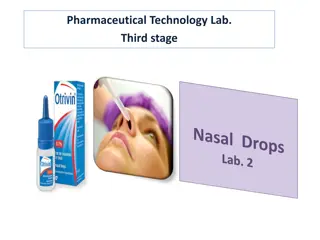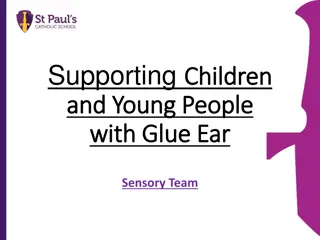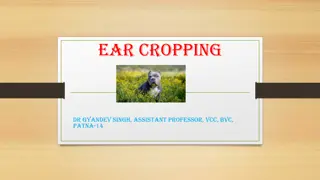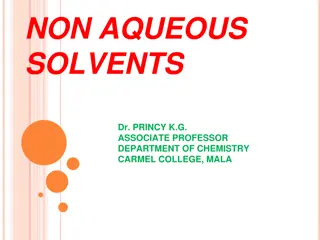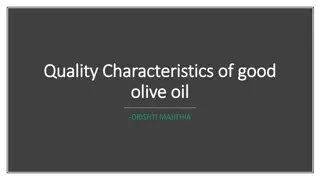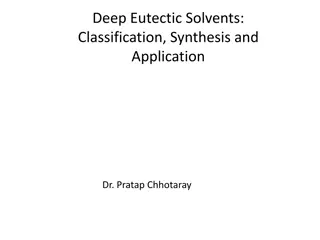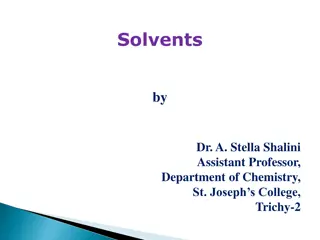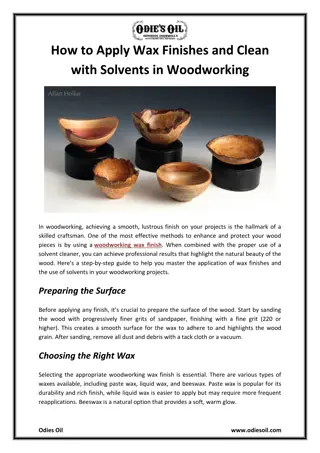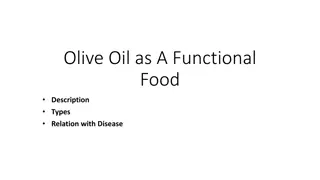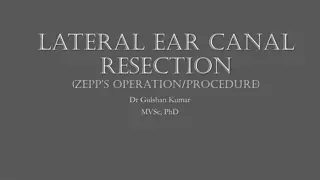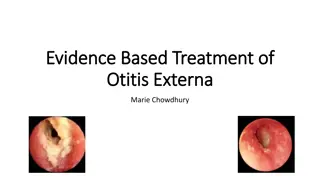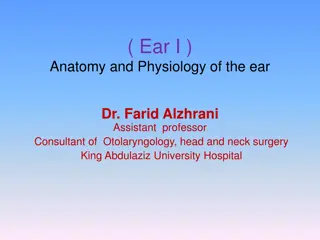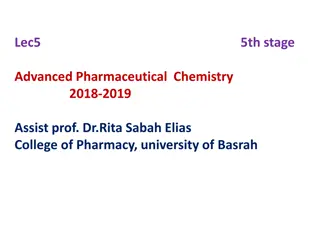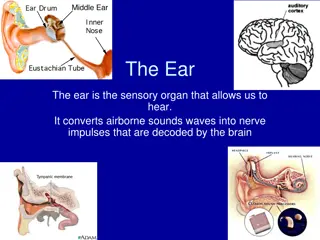Management of Symptomatic Ear Wax in Adults: Olive Oil Drops vs. Alternative Solvents
Adults (>18 yrs) presenting with symptomatic ear wax often seek interventions like olive oil drops or alternative ear wax solvents. A study compared the efficacy of olive oil drops in conjunction with syringing versus alternative treatments or no treatment. PubMed search yielded 26 papers, with 2 relevant randomized controlled trials showing mixed results. One trial by Chaout et al. found no significant difference in wax removal between olive oil and triethanolamine polypeptide, highlighting the need for further research in this area.
Download Presentation

Please find below an Image/Link to download the presentation.
The content on the website is provided AS IS for your information and personal use only. It may not be sold, licensed, or shared on other websites without obtaining consent from the author. Download presentation by click this link. If you encounter any issues during the download, it is possible that the publisher has removed the file from their server.
E N D
Presentation Transcript
Population Adults (>18 yrs) presenting with symptomatic ear wax Intervention Use of olive oil drops Comparator Use of alternative ear wax solvent or no treatment Outcome Removal of ear wax, with or without syringing
In {an adult with symptomatic ear wax} are {olive oil ear drops} best at {removing wax and facilitating syringing} ?
A 40 year old man presents to his GP with a sensation of bilateral blocked hearing, tinnitus and itching. Examination reveals hard wax obscuring the auditory canal and tympanic membrane. The gentleman asks if olive oil drops are the best first option and whether they need to be used in conjunction with syringing to be effective?
PubMed, Embase & Medline search using strategy: [exp ear wax OR cerumen] AND [olive oil] LIMIT to human and English language
26 papers 3 systematic reviews or meta-analysis 21 irrelevant or in vitro 2 relevant RCTs 1 controlled clinical trial ??Eekhof paper
Author, Patient group Author, date & county date & county Chaout 67 patients presenting to secondary care clinic with impacted ear wax. Randomised to treatment with olive oil (35) or triethanolamine polypeptide (TP) (32) with subsequent syringing for all patients. Randomised controlled trial. Amount of wax removed, measure of occlusion of TM & volume of water needed for irrigation & removal. States no significant difference in degree of occlusion or amount of wax removed, but no p values and in 4/35 of those with olive oil negligible removal vs 0/32 in TP group. Significantly smaller water volume required in TP group (p<0.05). Participant groups and concealment process not described so risk of selection bias. Assessors not blinded to treatment. Amount of water used estimated by assessor, significant risk of bias. Relatively small sample size, no power calculations. Chaout De De Saintonage Saintonage & Johnstone. 1973, UK & Johnstone. 1973, UK Study level Outcomes Key results Study weaknesses
Author, Patient group Author, date & county date & county Fraser et al. 1990, UK 124 geriatric patients from 6 secondary care sites with bilateral hard ear wax occluding the TM. One ear treated, other used as control with sodium bicarbonate for each patient. Various substances used. 25 patients randomised to olive oil. Multi-centre randomised control trial. Ease of syringing, assessment of wax removed, frequency of syringing. No significant improvement with olive oil for either ease or frequency of syringing. Olive oil showed lowest percentage of broken up wax (16%) if the different cerumenolytics used. Subjective measures of ease of syringing, although assessor blinded as to intervention. Baseline amount of ear wax not recorded. Relatively small sample sizes without power calculations. Fraser et al. 1990, UK Study level Outcomes Key results Study weaknesses
Author, Patient group Author, date & county date & county Hinchcliffe 185 RAF personal with obscured TM due to hard wax in one or both ears. Participants allocated to one of four treatment arms including olive oil with a further control arm. 37 participants in each arm. Controlled clinical trial. Number of times 5 minutes of subsequent syringing was not successful at clearing meatus after intervention. Number of participants with significant subsequent discomfort. Olive oil the only intervention statistically better than control, above sodium bicarbonate, cerumol or hydrogen peroxide. Equally few adverse events as other interventions. Baseline characteristics of participants not included, relatively small sample size without power calculations. Hinchcliffe. 1995, UK. . 1995, UK. Study level Outcomes Key results Study weaknesses
Author, Patient group Author, date & county date & county Eekhof 42 patients (59 ears) presenting to primary care with persistent ear wax (defined as persisting after 5 attempts at syringing). Participants allocated by year of birth to have warm water instilled for 15 mins (n=22) or olive oil drops nightly for 3 days (n=20). Quasi-randomised control trial Number of syringing attempts required post intervention to clear ear wax. (Recorded as 6 after 5 failed attempts). No statistically significant difference in number of syringe attempts required (water 3.0 vs oil 2.4). 1 patient in both groups had 5 further failed attempts. Assessors not blinded as to intervention, randomisation process not random, potential for selection bias. Small sample size. Eekhof et al. 2001, Netherlands. et al. 2001, Netherlands. Study level Outcomes Key results Study weaknesses
The evidence for the use of olive oil is weak and some of the in vitro studies suggest that it is ineffective alone in cerumenolysis. It does however seem to be equally effective to other topical solvents in providing a slight advantage over no treatment in facilitating successful syringing. There is a lack of any recent, well-designed, large scale randomised control trials in this area, a point recognised by the three previous systematic reviews.
There is no evidence that olive oil offers a significant benefit over other topical treatments for ear wax but given its safety and cost is a reasonable first line treatment, particularly if used in conjunction with subsequent syringing.


